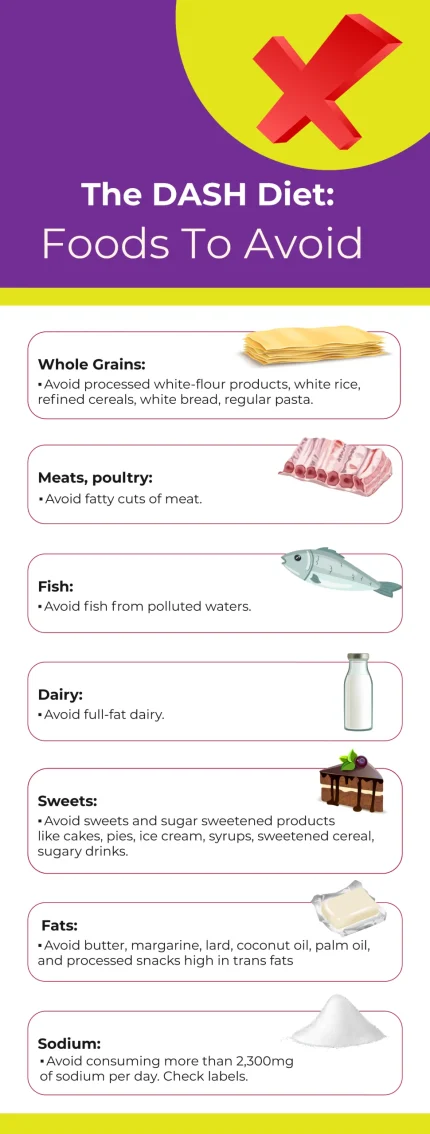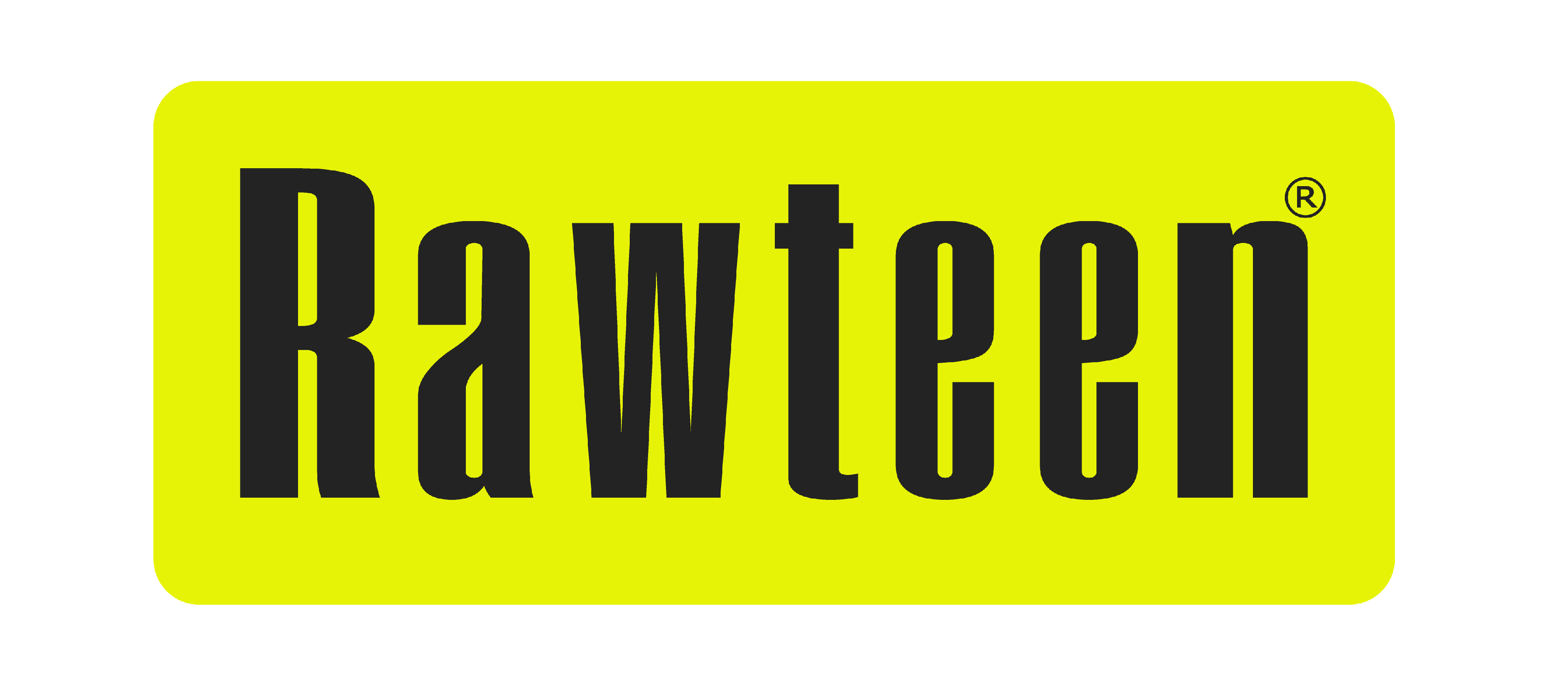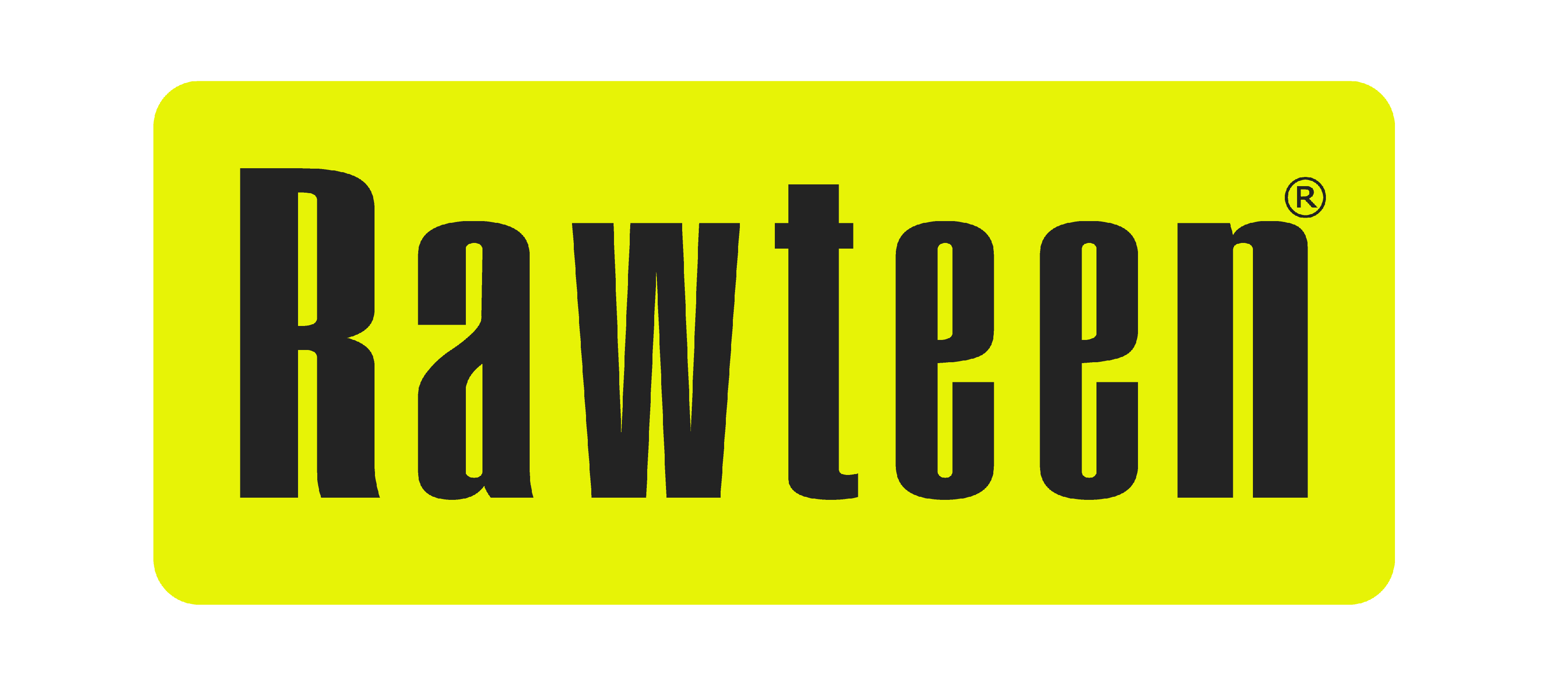DASH Diet Basics
A Simple Guide to Better Eating
What is the DASH Diet?
The DASH diet, or Dietary Approaches to Stop Hypertension, is a science-backed diet to lower blood pressure and improve heart health. It’s a whole foods diet that emphasizes an abundance of plant foods and lean proteins, while limiting sodium, added sugars, and unhealthy fats. It has been used to lower blood pressure, manage weight, and to improve type 2 diabetes, cholesterol, kidney health, and metabolic syndrome. These combined effects also provide protection against cardiovascular disease.
Beyond its health benefits, the DASH diet is adaptable to different preferences, making it accessible for a wide range of individuals. It doesn’t require cutting out entire food groups or following rigid meal plans. Instead, it encourages moderation and mindful choices, offering an achievable path to long-term health. Whether you’re looking to manage hypertension, improve your diet, or simply adopt a healthier lifestyle, the DASH diet provides a sustainable framework for nourishing your body while enjoying a variety of wholesome foods.
Understanding the DASH Diet for You
The diet works by emphasizing foods that are naturally rich in key nutrients like potassium, calcium, and magnesium while being low in sodium. It includes plenty of vegetables, fruits, whole grains, lean protein sources like poultry and fish, low-fat dairy, nuts, seeds and legumes. The diet limits high-sodium foods, added sugars, saturated fats, and red meat.
At its core, the DASH diet leverages the mineral content naturally occurring in whole foods to support healthy blood pressure regulation. Potassium, calcium, and magnesium are crucial for maintaining proper blood vessel function and balancing the effects of sodium in the body. Without adequate balance from other minerals, sodium can elevate blood pressure when consumed in excess or when minerals are unable to be cleared through the kidneys. By increasing the intake of these vital minerals through nutrient-dense foods, the DASH diet helps to relax blood vessels, improve circulation, and reduce strain on the cardiovascular system.
DASH is a diet of guidelines rather than one of restrictive food lists. It’s extremely easy to adopt and adjust to your own cultural, food-sensitivity, and taste preferences and needs. So, anybody can do it. Those who implement this diet find that DASH directly influences blood pressure and overall heart health.
Different Types of DASH Diets
The DASH diet is straightforward with a lot of flexibility already built in. So, it hasn’t been necessary to create a lot of formal versions of it.
Standard DASH Diet: This version follows the general DASH recommendations of reducing sodium intake to 2,300 mg per day while emphasizing fruits, vegetables, whole grains, lean proteins, and low-fat dairy.
Lower-Sodium DASH Diet: A stricter variation, this version limits sodium intake to 1,500 mg per day, making it even more effective for individuals whose blood pressure is very sodium sensitive.
Both versions maintain the same core principles but differ in their sodium allowances, allowing for flexibility based on individual health needs and goals.
Potential Health Benefits of the DASH Diet
DASH offers numerous health benefits, supported by extensive research.
Lowers Blood Pressure: The DASH diet is specifically designed to prevent and treat hypertension by emphasizing nutrient-rich foods and reducing sodium intake (1✓, 2✓). When following DASH, 78% of individuals group reduced their systolic blood pressure to below 140 mm Hg.
Reduces Cardiovascular Disease Risk: Adhering to the DASH diet has been associated with a decreased risk of cardiovascular diseases, including heart disease and stroke 3✓.
Lowers Cholesterol: Research indicates that the DASH diet can improve lipid profiles, contributing to better heart health 4✓.
Supports Weight Management: The DASH diet has been recommended as an effective approach for weight loss and maintaining a healthy weight 5✓.
Lowers Risk of Type 2 Diabetes: Following the DASH diet may reduce the risk of developing type 2 diabetes by improving insulin sensitivity (7✓, 8✓). Decreases Inflammation: The DASH diet has been shown to reduce markers of inflammation, which are linked to various chronic diseases 8✓.
Supports Kidney Health: The DASH diet helps protect kidney function by reducing sodium intake and emphasizing foods that support healthy blood pressure, which is crucial for preventing kidney disease. Research suggests that following the DASH diet can slow the progression of and prevent chronic kidney disease 9✓.
Reduces Risk of Metabolic Syndrome: The DASH diet has been linked to a lower risk of metabolic syndrome—a cluster of conditions including high blood pressure, elevated blood sugar, excess abdominal fat, and abnormal cholesterol levels. Studies indicate that adhering to the DASH diet can improve insulin sensitivity and reduce the likelihood of developing metabolic syndrome 10✓.
Foods To Include on DASH
here are no special foods for the DASH diet. Instead, the diet gives daily or weekly goals for different food categories.
Daily Goals
-
- Whole Grains: 6–8 servings
- Lean meats, poultry, and fish: 6 or less servings
- Low-fat or fat-free dairy products: 2–3 servings
- Fruit: 4–5 servings
- Vegetables: 4–5 servings
- Fats: 2–3 servings olive or avocado oil
- Sodium: 2,300 mg limit
Weekly Goals
-
- Nuts, seeds, dry beans, and peas: 4–5 servings
- Sweets: 5 or less servings

Foods To Avoid with DASH
Aside from sodium, the foods to avoid are described in categories. There are no specific foods to avoid on this diet.
-
- Grains: Avoid processed white-flour products, white rice, refined cereals, white bread, regular pasta.
- Meats, poultry: Avoid fatty cuts of meat.
- Fish: Avoid fish from polluted waters.
- Dairy: Avoid full-fat dairy.
- Sweets: Avoid sweets and sugar sweetened products like cakes, pies, ice cream, syrups, sweetened cereal, sugary drinks
- Fats: Avoid butter, margarine, lard, coconut oil, palm oil, and processed snacks high in trans fats
- Sodium: Avoid consuming more than 2,300mg of sodium per day. Check labels.

Supplements to Take and Lifestyle Changes to Make
Specific nutrients needed with the DASH diet come in the food. So, supplementation isn’t typical, especially if medications are in use. There are perhaps two considerations.
-
- Sprouted Flax Seed Powder: Provides heart healthy omega-3 fatty acids that really complement the diet, along with fiber to support toxin elimination, which also helps lower blood pressure.
- Water: Become reacquainted with something you may not have seen in a while. Pure, clean (not mineral, not tap) water. Especially first thing in the morning before coffee or medications, drinking 500 ml of plain water (flat or carbonated) can be extremely therapeutic in flushing out excess minerals and lowering blood pressure.
Supplements to Avoid
Sometimes the things that help the most are the things we stop that are unknowingly harming us.
-
- Electrolyte replacement supplements: People with high blood pressure already have too many electrolytes in their blood. The blood is already too thick. So, adding even more electrolytes can be hard on the kidneys, which must clear all this material from the blood. If you sweat a lot, drink plain water if your blood pressure is high. Your body will have a better day.
- Sodium in supplements or powders: Since the DASH diet aims to reduce sodium intake, it’s important to avoid supplements that contain high levels of sodium unless prescribed by a healthcare provider.
- Calcium: While calcium is an important part of the DASH diet (from food sources like dairy and leafy greens), calcium supplementation should be avoided. Calcium is an electrolyte mineral, and there are already too many minerals in the blood when there is high blood pressure.
- Iron: The DASH diet provides sufficient iron. Taking extra iron in supplement form or as “fortification” of foods can contribute to iron overload and additional tissue damage. The human body doesn’t have a specific way to release a lot of extra iron. So, when we take in too much, we hold on to it for decades, and it damages the organs over time. You’ll want to not only avoid iron in supplement form (even in a multi) but also be on the lookout for foods that are fortified with iron and avoid them as well.
- Potassium: Potassium is key in the DASH diet, but excessive amounts can cause high potassium blood levels, which can be dangerous for people with kidney problems or those taking certain medications. It’s best to let the body regulate potassium from food sources. Forcing the potassium up with supplementation crowds the blood with too much mineral. Then it can become a problem the body has to deal with.
Getting Started on Your DASH
The DASH diet can be a welcome solution to the unsettling news of having a health problem like high blood pressure. It’s simple and easy to implement.
Post Your Food List in The Kitchen
Keep your DASH food list visible in your kitchen and carry a copy with you. It can be very helpful when going to events, traveling, or visiting friends and family. Having the list available lets you to make informed choices and ensures you’re sticking to the diet. You will usually find there are always DASH friendly options wherever you are. You just needed to know to look for them.
Go Food Shopping
Clear pantry space for your DASH foods. Keep high-fat, high-sodium foods on a separate shelf so you aren’t distracted. If you live with others who are not doing DASH, have a conversation about your plan and explore ways to collaborate during mealtimes.
Think about any favorite foods that aren’t on the DASH diet, and plan right now what you will replace them with. If you usually love to eat fries or chips, plan to pick up some sweet potatoes and root vegetables for roasting. You won’t regret stepping out a little to find your new delicious healthy favorites.
Create a shopping list based on the DASH diet and head to your preferred store that offers a variety of DASH diet-specific foods. Stock up on ingredients for your pantry, refrigerator, and freezer, focusing on fresh produce, whole grains, lean proteins, and low-fat dairy. Look for DASH labels to simplify your shopping and meal prep.
Plan Your Meals
Planning a DASH meal really isn’t very different from planning any other meal. As far as ingredients go, you already took care of that during your grocery shop. If you’re used to ordering out a lot, and you realize you need to start cooking at home more, then pick up a DASH cookbook to get you started.
If you’re busy during the work week or just don’t like to cook often, it can be a great plan to do a lot of food prep for the week over the weekend. At least to get you halfway through the week. Plan to make a big pot of beans or roast a chicken. Plan a big salad. Chop some vegetables and store them raw in the refrigerator or toss them in the oven and roast them ahead of time. These simple steps over the weekend can go a long way to make the week less busy.
Replace the Saltshaker
Since grabbing the saltshaker can be an automatic habit, remove the saltshaker from your table. Replace it with a manual salt grinder and fill it with lower sodium unrefined Sea Salt Flakes. Better yet, look for seasoned sea salt flakes such as Sea Salt Flakes with Basil & Garlic or Sea Salt Flakes with Lemon. The flakes are light and so you don’t get as much out of the grinder. It takes more work to dispense. And it’s not plain refined sodium chloride, which is minimized on the DASH diet. If you are home cooking whole foods and adding no salt to the dish, this is a very reasonable flavor adjustment tactic that doesn’t raise blood pressure for most people.
Your taste buds will adjust if you’ve been a salt-o-holic. Some alternatives to try are fresh herbs and spices, garlic and onion, lemon or lime, vinegar, mustard or horseradish, and tomato paste.

Common Mistakes with DASH
Here are some common mistakes people often make while following the DASH diet.
-
- Ignoring sodium in processed foods: One of the biggest challenges is underestimating the amount of sodium hidden in processed or packaged foods, such as canned soups, sauces, deli meats, and snacks. These foods can quickly push your sodium intake above the recommended limits, even if you’re eating plenty of fresh fruits and vegetables.
- Not balancing potassium, calcium, and magnesium: The DASH diet emphasizes a balance of these key minerals for optimal blood pressure control. If you focus too much on reducing sodium while not incorporating enough potassium- and calcium-rich foods like vegetables, your body will feel (and be) deprived.
- Neglecting whole grains: Whole grains are a cornerstone of the DASH diet. However, if you unintentionally skip these and opt for refined grains like white bread or pasta, these work against heart health, don’t offer the same fiber content, and defeat the purpose of the DASH diet. Now, if you find a product that does have added fiber, that will be a good choice.
- Overdoing high-fat dairy: While low-fat and fat-free dairy products are encouraged on the DASH diet, some may unknowingly choose full-fat dairy options. This can lead to excess saturated fats, which the diet recommends limiting. Just something to be mindful of with your quantity.
- Not planning meals: The DASH diet requires thoughtful meal planning and preparation to ensure you’re getting the right balance of nutrients. Failing to plan can lead to the temptation of grabbing unhealthy, sodium-rich fast foods or skipping meals altogether.
- Not tracking sodium intake: Keeping track of daily sodium intake is crucial for the DASH diet. Many people forget to monitor sodium levels carefully, especially when eating out or using condiments, which may unknowingly add significant sodium to meals. You will know to go back to reviewing your daily sodium intake if your blood pressure starts to creep up.
- Relying too much on salt substitutes: While some salt substitutes may seem like a quick fix, they can contain potassium chloride, which might not be suitable for everyone, particularly those with kidney disease or those on potassium-sparing medications. It’s essential to consult with a healthcare provider before using salt substitutes.
Being aware of these common mistakes and making mindful choices can help you stay on track with the DASH diet and achieve the best results for your health.
Possible Side Effects of DASH
While the DASH diet is generally considered safe and beneficial for most people, there can be some possible side effects, especially during the initial transition to the diet. These side effects typically subside as your body adjusts. Some potential side effects are here.
-
- Increased bowel movements: The DASH diet is high in fiber due to its emphasis on whole grains, fruits, vegetables, and legumes. If your body is not accustomed to a high-fiber diet, you may experience increased bowel movements, bloating, or gas in the beginning. Gradually increasing fiber intake can help reduce these symptoms.
- Electrolyte imbalances: The diet’s focus on reducing sodium while increasing potassium, calcium, and magnesium intake can cause temporary shifts in electrolyte balance, which may lead to feelings of fatigue, dizziness, or muscle cramps, particularly if your body is not used to the new mineral levels. Staying well hydrated is the best way to help your body adjust.
- Increased thirst: Due to the higher intake of potassium and the increased fluid intake from the diet’s emphasis on fruits and vegetables, you may feel more thirsty than usual. It’s important to stay hydrated, especially if you are also increasing your physical activity. Remember that the best time for additional water intake is first thing in the morning.
- Low blood pressure: For people already on blood pressure medications, following the DASH diet could heal blood pressure, making the medication less necessary. This could result in dizziness, lightheadedness, or fainting. Monitoring your blood pressure frequently, at least twice per week, during the first few months of the DASH diet can help you be aware of what’s happening in your body before you feel the undesirable effect of having too much blood pressure medication in your system. Of course, contact your prescriber as soon as you see your blood pressure dropping so your dose can be changed.
- Digestive discomfort: The high intake of fruits, vegetables, legumes, and whole grains may cause digestive discomfort, such as bloating or gas, especially for individuals not accustomed to such foods. Eating smaller, more frequent meals can help alleviate this discomfort. Sipping lemon water or adding a bit of apple cider vinegar to water can help acidify the stomach and control bacteria from causing these symptoms.
- Possible weight changes: While the DASH diet is not specifically a weight loss diet, some people may experience changes in weight, either due to an increased consumption of high-calorie, healthy foods (such as nuts and seeds) or because of a transition to lower-sodium, whole food options that could lead to weight loss. There is a lot of room within the DASH diet to adjust if you find something unwanted happening with your weight. You can pull back on your nut and seed butters if you’ve gained weight or increase your protein foods if you’ve lost weight.
If you experience any persistent side effects or discomfort while on the DASH diet, it’s a good idea to consult with a healthcare provider or dietitian to ensure the diet is tailored to your individual needs.
Who Should Not Immediately Start a DASH Diet
Certain people may need to approach DASH with caution or delay starting it.
-
- People with kidney disease: If you have advanced kidney disease or kidney failure consult a healthcare provider before starting the DASH diet. The increased intake of potassium, calcium, and magnesium from the diet could potentially interfere with kidney function, especially if your kidneys can’t properly process these minerals.
- People on blood pressure medication: The DASH diet is specifically designed to lower blood pressure by reducing sodium intake and increasing potassium, calcium, and magnesium. If you’re on blood pressure medication, the diet may further reduce your blood pressure and cause symptoms. You could even faint. So, it’s important to give your prescriber a heads up before you get started.
- Individuals with sodium or fluid restrictions: Some people may have medical conditions that require strict sodium or fluid restrictions, such as certain heart or kidney conditions. In these cases, the DASH diet may not be appropriate or may need to be modified based on the individual’s specific health needs.
- Pregnant or breastfeeding women (in some cases): While the DASH diet is generally safe for most pregnant or breastfeeding women, it’s essential to ensure that calorie and nutrient intake is sufficient. In some cases, adjustments may be needed to meet the increased nutritional demands during pregnancy and lactation. Always consult with a healthcare provider first.
The Bottom Line
The DASH diet, while requiring some commitment, planning, and embrace of change, can have a significant positive impact, especially if you’re aiming to improve heart health, lower blood pressure, or manage other chronic conditions. It’s important to evaluate whether this diet aligns with your personal health needs and objectives. If your condition has been shown to benefit from the DASH diet, it’s worth considering.
Use this guide to familiarize yourself with the core principles. Stock up on DASH-friendly foods, invest in a trusted cookbook, and plan your meals in advance for a smooth transition. Keeping a journal of your blood pressures and what you eat can help you monitor your progress and adjust as needed.
Healthy DASH Essentials

Fruits & Veggies

Meat & Poultry

Fishery

Dairy & Alternatives

Bakery

Breakfast & Cereals

Coffee & Tea

Beverage

Nuts & Seeds

Pasta, Rice & Pulses

Cans & Jars

Frozen Food

Herbs & Spices

Home Baking

Ready-to-Eat

Snacks & Treats

Superfoods



































